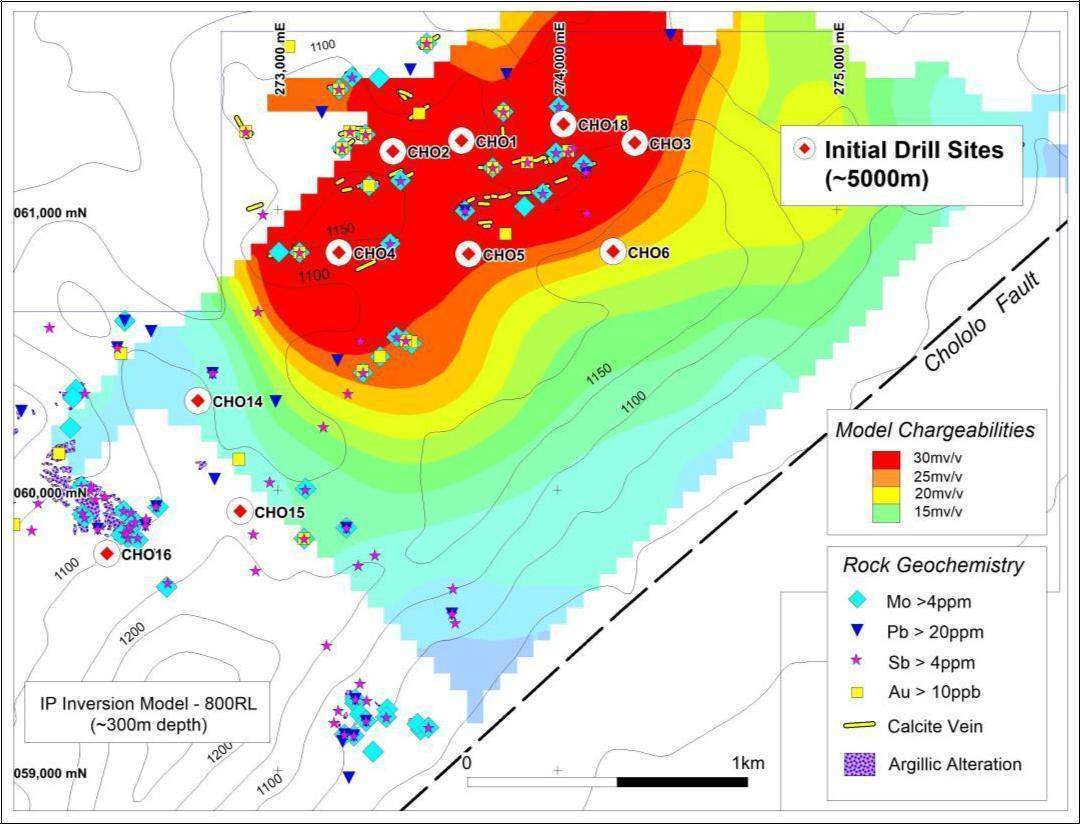Australian mining company AusQuest has started a diamond drill program featuring 10 holes for 5,000m at its Chololo Porphyry copper project in Peru.

Image: Chololo Porphyry Copper target showing location of the initial drill holes. Photo: courtesy of AusQuest Limited.
The company said that currently two drill rigs have been deployed on site. The first rig drilling will be done at the CH06 target while the second drilling will be at the CH018, which is due to begin shortly.
AusQuest plans to drill all the 10 holes to a minimum depth of 500m with each of the holes needing about two weeks to complete. It expects to make the drill core logging/processing plus analysis available about 4-6 weeks upon completion of each hole.
The full drilling program is anticipated to take a number of months to complete, said the Australian firm.
Located about 30km from the Ilo port in southern Peru, the Chololo Porphyry copper project is said to be near road, rail and power infrastructure.
AusQuest said that through its mapping and sampling in the past, it had marked the potential for a buried porphyry copper system and the following induced polarization (IP) surveys highlighted a large-scale priority drill target.
The development of the Peruvian copper project will be subject to an agreement between AusQuest and South32. Under the agreement, South32 can get a stake of 70% in the project by investing $4m while having the right to raise it to 80% by completing a pre-feasibility study.
AusQuest, through its Peruvian subsidiary, is the operator during the first phase of drilling.
AusQuest managing director Graeme Drew said: “The target being drilled at Chololo has the potential to be a company-maker and we are keenly awaiting the outcome of our first drilling program in Peru, where many large copper deposits are known to occur.”
“We are also working hard to keep the drill rigs turning in Peru on a semi-continuous basis over the next six months or so. Drill permitting at our Cerro de Fierro Project is nearing completion and will form the basis of our second drill programme later in the year.”
